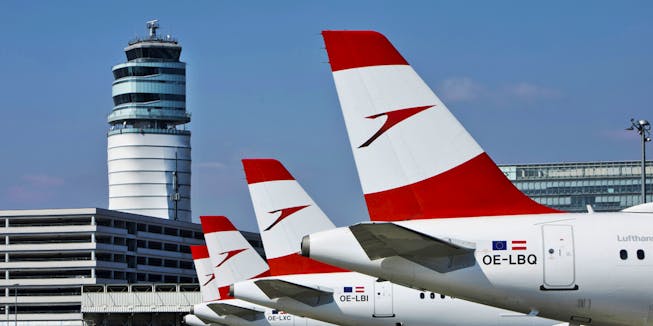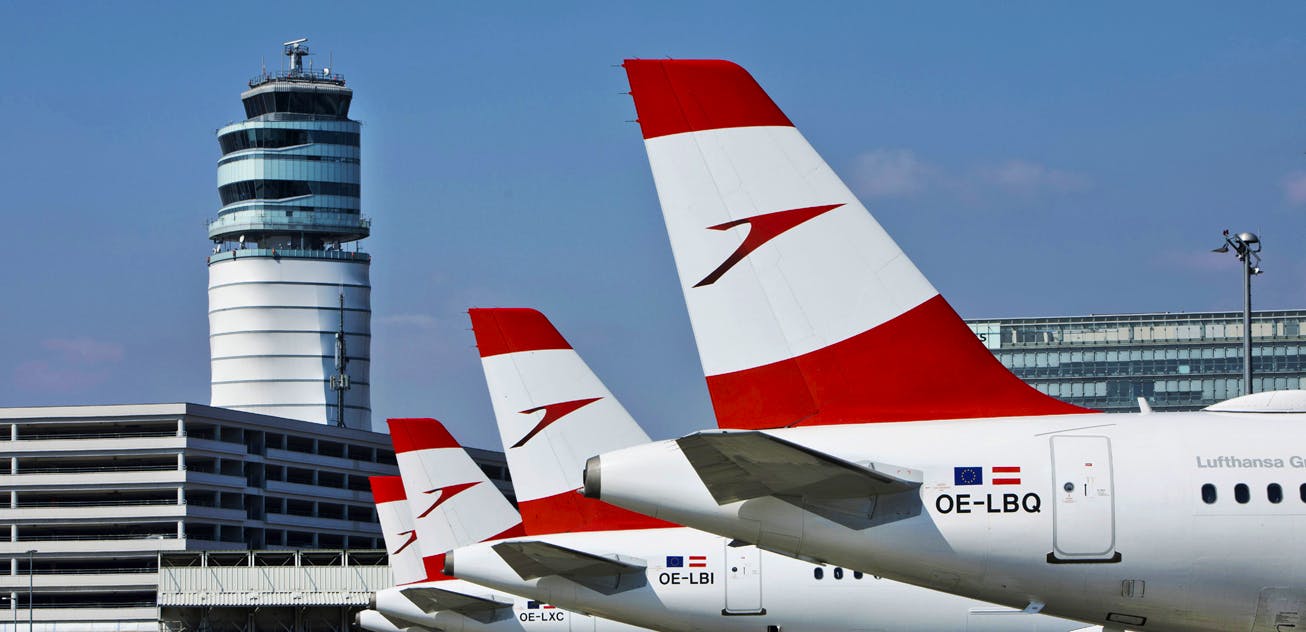Cost savings
Austrian Airlines will cut its costs
Due to massive competition by low-cost airlines, the Lufthansa subsidiary has to cut its cost base. Austrian Airlines is reducing its workforce and adapting its long-haul offering.

Austrian Airlines jets in Vienna.

Austrian Airlines jets in Vienna.
Two figures prove the unpleasant situation that CEO Alexis von Hoensbroech is in. From the beginning of January until the end of September, Austrian Airlines carried 11.2 million passengers. This is 6 per cent more than in the first nine months of 2018. However, the airline’s turnover fell by 2 per cent to 1.696 billion euros in the same period. The brutal price war in Vienna has left its mark.
And a third figure shows why the whole thing is even more unpleasant than it appears at first glance: while turnover is falling, the costs of Austrian Airlines are rising – mostly because fuel has become significantly more expensive. Compared to 2018, they climbed by 4 per cent to 1.679 billion euros.
Probably in the red
As a result, operating profit (adjusted for gains and losses on aircraft disposals) for the first nine months of 2019 fell sharply. Instead of 100 million euros like in the previous year, only 17 million euros resulted at Austrian Airlines. The most brutal aspect: there is no improvement in sight in the winter season that has just started, as the summer months with the long holiday season are generally the best for European airlines.
Therefore, von Hoensbroech has to lower his forecast for 2019. One cannot «rule out» a negative result for 2019, he says, and in 2020 a loss is even very likely, he explained on Thursday (November 7) at a press conference in Vienna. This results is new austerity measures for Austrian Airlines, which the airline itself calls «hard». «We have to reposition ourselves in order to survive in the brutal competition against low-cost airlines,» says von Hoensbroech.
90 million lower cost base
PE20 is the name of the new cost cutting programme that aims to cut costs by 90 million euros a year from 2021. Job cuts are therefore unavoidable. 700 to 800 jobs will go at Austrian Airlines. There should be as few redundancies as possible.
The reduction affects all areas – administration, ground staff and flying employees. It will mainly be achieved through fluctuation. At the same time, processes are increasingly being digitized and simplified, and other expenses are being cut in order to make additional savings.
Changes on long-haul
But that alone is not enough. From January 2020 onwards, Eurowings will be operating wet lease flights for Austrian Airlines. The four additional aircraft will allow new routes to be added, thus attacking Easyjet, Lauda, Level and Wizz Air. New additions to the flight schedule are Barcelona, Birmingham, Nuremberg, Rome and Zadar.
At the same time, Austrian Airlines is adapting its long-haul offering. The summer destination of Miami will no longer be offered in 2020. The route is not «economically viable», according to the management of Austrian Airlines. At the same time, the frequency on the Vienna-Los Angeles route will be reduced from seven to five flights per week.
150 million from 2023 onwards
The capacity freed up will be used elsewhere, says CCO Andreas Otto. Austrian is therefore not reducing its long-haul fleet. He did not want to reveal the new destination yet. But: «We already have an idea,»says Otto.
The cost-cutting measures are necessary so that Austrian Airlines can finance its investments. Hoensbroech expects an adjusted operating profit of around 150 million euros a year from 2023. Only then will the Austrian Lufthansa subsidiary be able to renew its long-haul fleet.
Older measures to be continued
In January, Austrian Airlines decided to concentrate entirely on Vienna. Flights such as Graz – Frankfurt will be transferred to other Lufthansa subsidiaries. The result is the closure of the crew bases Altenrhein, Graz, Innsbruck, Klagenfurt, Linz and Salzburg.
It was also announced at the time that the 18 Bombardier Dash 8-400 turboprops would be phased out earlier than planned by 2021 and replaced by larger aircraft. These measures will be carried on unchanged.
